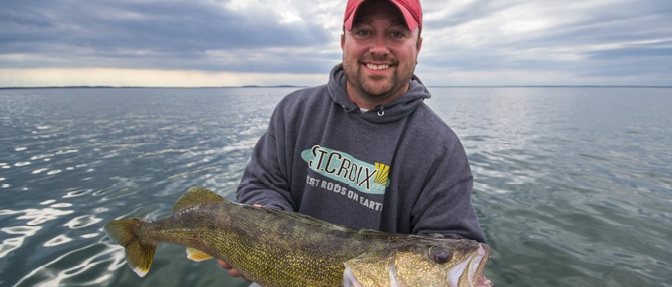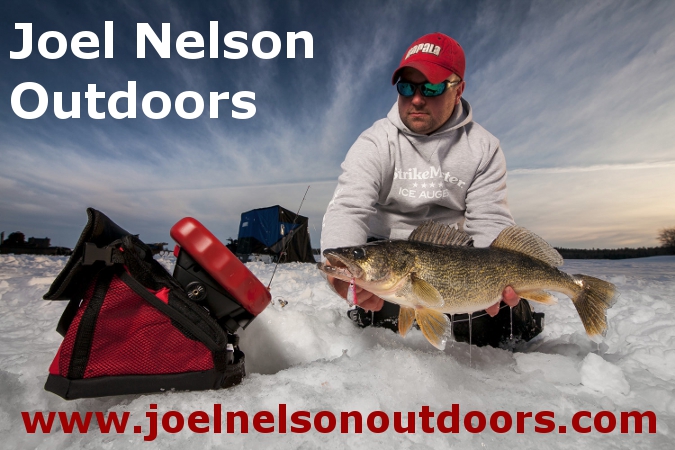There are plenty of presentations in walleye fishing these days, ranging from burning trolling runs to the slowest vertical applications. While all of them will catch ‘eyes provided the conditions are right, the fact of the matter is that the rose-colored glasses of yesteryear’s bites, rather than current fish location and variables are what make us select the techniques that we do for any given day. I’m just as guilty. I love a handful of select patterns and tend to reflect on what has been successful rather than what will be. That said, what’s helped me get out of those ruts when needed, is to break down the bevy of presentations we have into 3 main speeds, then let fish locations and what I’m seeing on my sonar reflect how I should fish them.

Speed #1 – Trolling – 2.0mph – 3.0+mph
Pulling crankbaits is great fun, but more importantly, it’s your #1 defense against scattered fish, expansive areas, and new water. Fish strewn about a long breakline or flat, along with walleyes that are suspended and roaming make for prime candidates to put hard-baits in front of. Of course good intel or sonar-based evidence of this makes trolling like this a no-brainer, but it’s rarely a bad plan to start pulling crankbaits at the start of any day come summer. If you’re on any of the big walleye factory type lakes, and fishing new spots, you can cover some water and put more lures in front of more fish. More importantly, it’s a great way to scout areas while having a line down. Whether by long-lining, or pulling lead-core for deeper fish, the onus is on you as an angler to put these diving lures in front of the fish’s face, at the proper depth. From there, you’ll be relying on the fish and your electronics to give you clues on what you might do next.
As you’re fishing, pay careful attention to your sonar and what it’s telling you. You need to process the information in a general way by paying attention to the size, distribution, and number of fish you’re seeing on the screen, in order to put together a game-plan that continues to evolve as you gather more information. Trolling allows you to pass over areas while gathering valuable data, both visually and virtually, as you hopefully catch fish and see them on-screen.
Speed #2 – Trolling/Drifting – 1.0mph – 1.5mph
This intermediate speed is where a great deal of tournaments are won, and involve a number of related techniques from spinners on bottom bouncers, to slow-death rigs pulled in the same manner. The key to these presentations is certainly feeding the fish what they want, but before we get there we have to know quite a bit more about their locations. These techniques work great for pods of fish along a pronounced break, structural element, weedline, or other more linear feature. I spoke with Fishing Hall of Famer and consummate tourney pro Perry Good a few weeks ago, and we talked about a few locations where we like to pull slow-death rigs. Not surprisingly, most of those locations were broad pieces of structure where fish like to congregate along a certain stretch, rather than a precise, on-the-spot location. Sometimes, you do need to pull through a school of fish glued to these tiny spots in order to get them to bite, but the point is that there are likely more efficient means to present baits to the same fish.
Speed #3 – Nearly Stationary – 0mph – 0.5mph
To me, the most important reason to slow-down when walleye fishing, is likely only when you’ve got some solid information on fish locations, whether electronic or otherwise. Fishing slowly with little to no intel on where fish might be, especially on larger waters, can be frustratingly futile. Often, there’s just too much water for them to be elsewhere. While this speed has probably the largest category of patterns residing within it, we can break them up between relatively shallow and deep presentations. For many summer applications, we’re often fishing off of the main break into deep water, relying on our sonar to show off larger schools of fish relating to bait, hard-bottom edges, or other structure of interest. This is where the Jiggin’ Raps come out should fish be aggressive and in the mood to chase. If they’re in a more sullen mood, rigging various types of live-bait up to 0.5mph, or vertically jigging that same bait is often the ticket.
On the shallow end, again, I’m looking for intel as to why they’d be in that specific location to start with, but I’m also looking for certain conditions to excite the bite. Wind is the primary driver here, but pair it with lower-light, whether morning, evening, or just plain overcast, and we’ve got some prime conditions for a casting bite. Whether soft-plastic swim-baits, cranks, or even jigs with live-bait, think of fishing shallow and more slowly like you’re fishing for bass. Pick a few areas that are being buffeted by 10-15mph winds or better, especially if wind has been coming that direction for some time, and put the bow-mount down to cast at some shallow zones.
Of course there are many more presentations, and also exceptions to these rules. Not to mention, wrinkles or riffs on the same patterns detailed here. That said, the most important part about breaking down the 3 main speeds of walleye fishing, is to select one of those speeds and a resultant pattern based on what you’re seeing, not on what you once saw.

